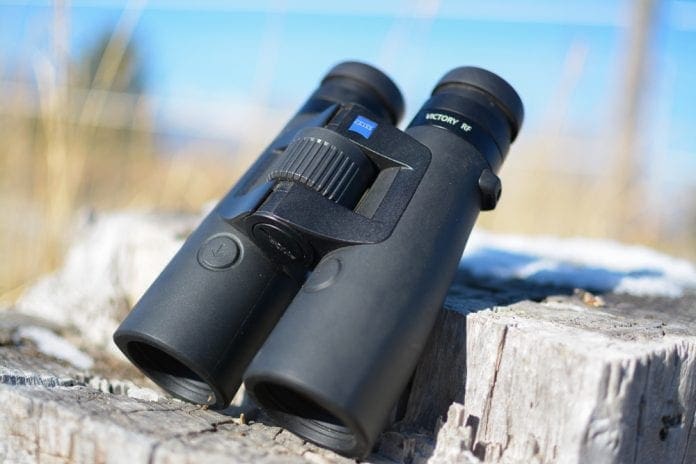In the backcountry of Montana, time was of the essence. I had spotted a group of six bulls over a mile away. It was about an hour after dawn, and I knew those bulls would not stay in the open much longer. My hunting buddy, Jared, and I put our horses into a trot and covered some country, which ended up being a mile and a half following the contour of the terrain. After tying up the stock, we headed out on foot and spotted the bulls drifting toward the black timber. I threw down my pack and got a range through the Zeiss Victory RF Binocular. The display read 451 yards followed by 6.4 MOA.

They didn’t know we were there but the biggest bull was only 50 yards from the timber’s edge. Hurriedly, I dialed the Nightforce ATAC-R and put a steady hold on the bull’s high shoulder. At the recoil, a satisfying WHOP echoed back from the intended target, and he dropped in his tracks. Yes! My heart skipped a beat, though, as he suddenly jumped up and trotted towards the timber. I quickly pulled up the Zeiss RF binoculars and marked him again. 487 yards and come up 7.1 MOA. Two more clicks on the elevation dial and I put another hold on the now heavily quartering away bull. Another shot, and another WHOP echoes back. This time he wobbles and goes down for good as one of his companions watch from a few feet away.
Necropsy revealed the first shot hit at point of aim, shattering the scapula, but the bullet fragmented explosively and only a few small fragments penetrated the on-side lung, while the remaining cup and core veered vertically into the on-side backstrap. Shot two went in behind the last rib and made ribbons out of the liver and off-side lung before lodging as a pretty mushroom under the off-side hide. It was impossible to judge the distance traveled by the bull between shots by eye, but the Zeiss Victory RF removed all doubt and gave me a real-time adjustment in seconds. The usefulness of the Zeiss RF system was crystal clear at that moment.
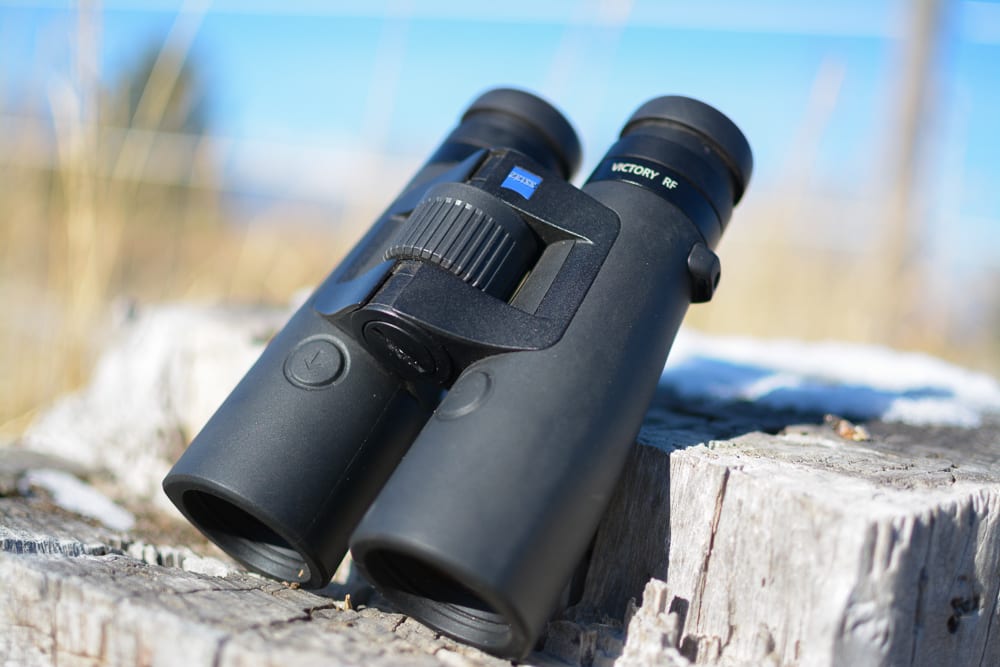
Multi-function Gear Wins
As a backcountry hunter, I really like multi-function gear. A trekking pole that doubles as a tent pole? Good. A beer opener in my knife handle? Yes, please. With this in mind, I have always liked the idea of a rangefinding binocular. Binocular and rangefinder in one. What’s not to like?
Well, in practice, it turns out it is pretty hard to do both well. A rangefinder has a display screen in the optical system. Generally, this leads to reduced optical performance. Then you have the laser, electronic components, and battery. All that usually leads to a hunchback of Notre Dame situation with apparent bumps, boils, and sores all over the binocular.
The Zeiss Victory RF Binocular
Carl Zeiss Optic entered the fray with their original RF binocular that worked pretty well, but really upped the ante with newest RF, just released this year in 8X42, 10X42, 8X54, and 10X54 configurations. Zeiss says the RF is a combination of premium binocular, 2500-yard rangefinder, and ballistic computer with real-time weather data. Whoa. The ballistic computer even Bluetooths to your phone with the Zeiss Ballistic App so you can import your specific ballistic data to the binocular for standalone field use.
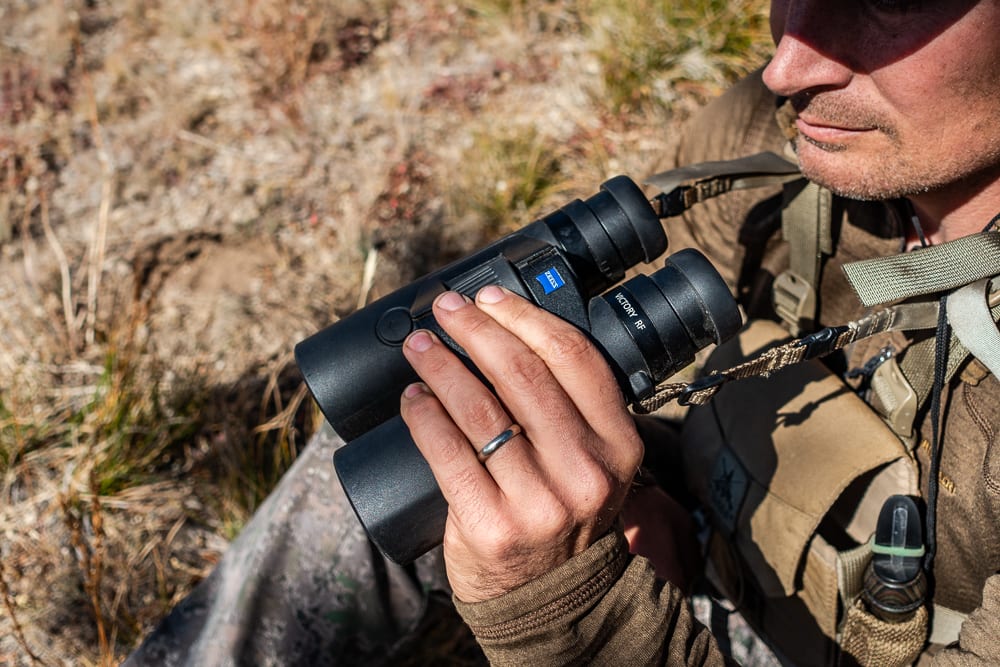
Exciting stuff, but there has to be a catch, right? Upon receiving my test unit, I pulled it out of the box thinking they forgot the rangefinder and just sent me a binocular. The Zeiss Victory RF is svelte. There are no big lumps or bumps. The barrels fit nicely in the hand, and it just feels like a regular binocular. Upon close examination, the barrel armor isn’t perfectly circular but has some mild angles in the housing, but it looks more for design aesthetics than engineering requirements. The single CR2 lithium battery compartment sits in the front hinge area. Unfortunately, this eliminates the standard 1/4-20 threaded tripod exit.

The left diopter ring sets the binocular for left/right vision like a normal roof prism binocular. The second diopter on the right focuses the display screen for the user. Unfortunately, both are held by friction and don’t lock, but I haven’t had them move on me in the field, thankfully.
As soon as the left diopter was set, I was pretty surprised. A clean, bright view met my eyes. Like the view of an actual premium binocular. Easy viewing with a deep depth-of-focus and pin sharp to very near the edge. There was very little field curvature. While there was some pincushion distortion visible when checking straight lines at the edge, it was very comfortable when panning.
The view was bright and handled flare from low-low-angle light remarkably well. I could see no indication of the display screen while viewing through the binocular. Interestingly, it WAS quite visible when looking through them backward through the objective end. Not sure how that magic works. Chromatic Aberration was invisible in the center of the field and mild at the edge.

I would sometimes forget the Zeiss Victory RFs were a rangefinder at all when glassing. A touch of the range button and the results would show in a moment. Then the results would disappear after a few seconds, and you were back to that easy, comfortable, premium binocular view. Very impressive. I was able to peer into deep shadows while hunting elk in archery season. Details materialized out of the dark similar to other top-shelf binoculars I had used previously.
Zeiss put an impressive list of optical technology goodies from their considerable library into the RFs. They include the excellent Lotutec hydrophobic coating on exterior lenses as well as big, bright Abbe-Koenig prisms and flourite-containing lenses.

Build quality was typical Zeiss precision. The rubber armor was thick and comfortable. The removable eyecups were nicely sized and comfortable against the skin. The center hinge was smoothly damped but held sufficiently when adjusted. The accessory objective covers were kind of flimsy, and I didn’t find them useful. No needs though, as my FHF Gear Bino Harness supplied ample protection. Somehow, Zeiss put all that binocular, rangefinder, and ballistic computer technology in a normally sized 10X42 binocular that weighs just a hair over two pounds as measured. Truly remarkable.

Solely as a premium binocular, the Zeiss Victory RF is excellent. With great optical performance and build quality at a reasonable weight, it competes with the very best. It does have a steep price tag of around $3400. But wait … it is also a feature-rich rangefinder and ballistic computer.
The Rangefinder and Ballistic Computer
The Zeiss Victory RF is much more than a top-tier binocular. It is also an excellent rangefinder and ballistic computer. While I have tried other range finding binoculars and loved having the 2-in-1 capabilities, the Zeiss Victory RF is really taking the technology to a point of field-usability that the others haven’t.
Using the RF in the field is easy. There is a ranging button on the right barrel and a corresponding “set” button on the left barrel. They are easy to feel and use without looking. If you are left-handed, you can even reverse the buttons’ functions!
Bowhunters will find the RF’s quite useful, as I did in bow season, getting reliable ranges down to 16 yards. It is easy to select the display setting for horizontal distance, which of course takes into account shot angle, and gives bowhunters zap-and-shoot functionality.

Rifle shooters really get the most out of the Zeiss Victory RFs, though. The RF stores nine ballistic curves internally that can approximate your hunting load’s trajectory. The user can select from the various curves in the field through the binocular’s menu system. The manual gives advice on selecting the appropriate curve for your load. Once selected, the hunter simply ranges the target, and the in-binocular display shows the distance reading followed by the hunter’s choice of angle, horizontal distance, or holdover (come-up) value in inches/cm, MOA, MIL, or number of clicks. The hunter can then make the indicated adjustment by holdover or elevation turret adjustment. The standard ballistic profiles certainly can get the shooter close to many loads, but the RF system really comes into its own with the custom ballistic profiles.
The App
Making most of the RF’s ballistic compensation abilities starts with the Zeiss Hunting App. After downloading the app to your smartphone, you can connect the RF to your phone via a Bluetooth connection. I found establishing a connection to be both simple and reliable.
Through the app, you can input the ballistic values (ballistic coefficient, muzzle velocity, sight height, etc.) for your particular load. In fact, you can sync up to nine separate custom ballistic profiles to the RF and select any of the profiles in the field without re-establishing a connection between your phone and the RF.
I made use of this feature by having profiles for both my 300 Winchester Magnum load and another profile for my kids’ 7mm-08 hunting load. The app offers more features than this though. You can register your Zeiss optics through the app, upload photos of your targets for your custom profiles, and even update the firmware of the RF through the Bluetooth connection.
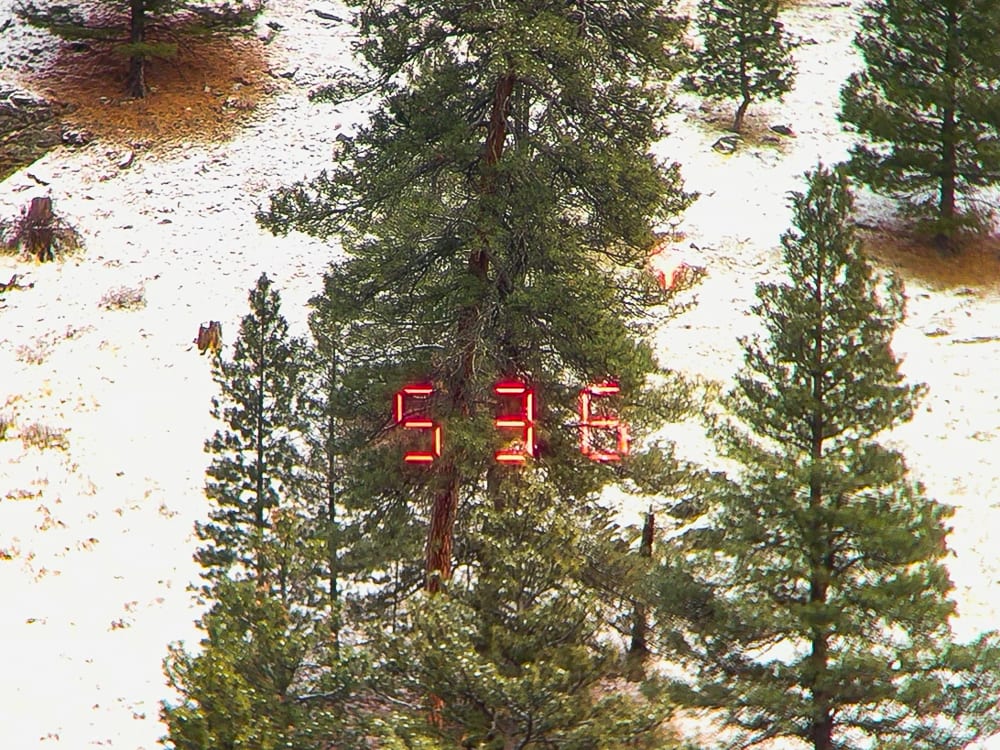
Accuracy
I found the Zeiss Victory RF to be as quick, reliable, and accurate as any consumer rangefinder I’ve used. Zeiss lists the laser wavelength at 905 nm and the beam divergence at 1.6 x 0.5 nm. Ranging performance was good out to 1200 yards on targets like trees and rocks even under challenging low-contrast conditions like grassy fields in the mid-day sun. Ranging reliability at ranges past 1200 yards struggled a little in sunny low-contrast conditions but improved it’s speed and reliability under good ranging conditions.
After the Montana General Season closed, I updated the firmware in the RF through the Zeiss App. The update process was extremely user-friendly and updated without issue. After the update, there was a noticeable improvement in ranging at those longer distances.
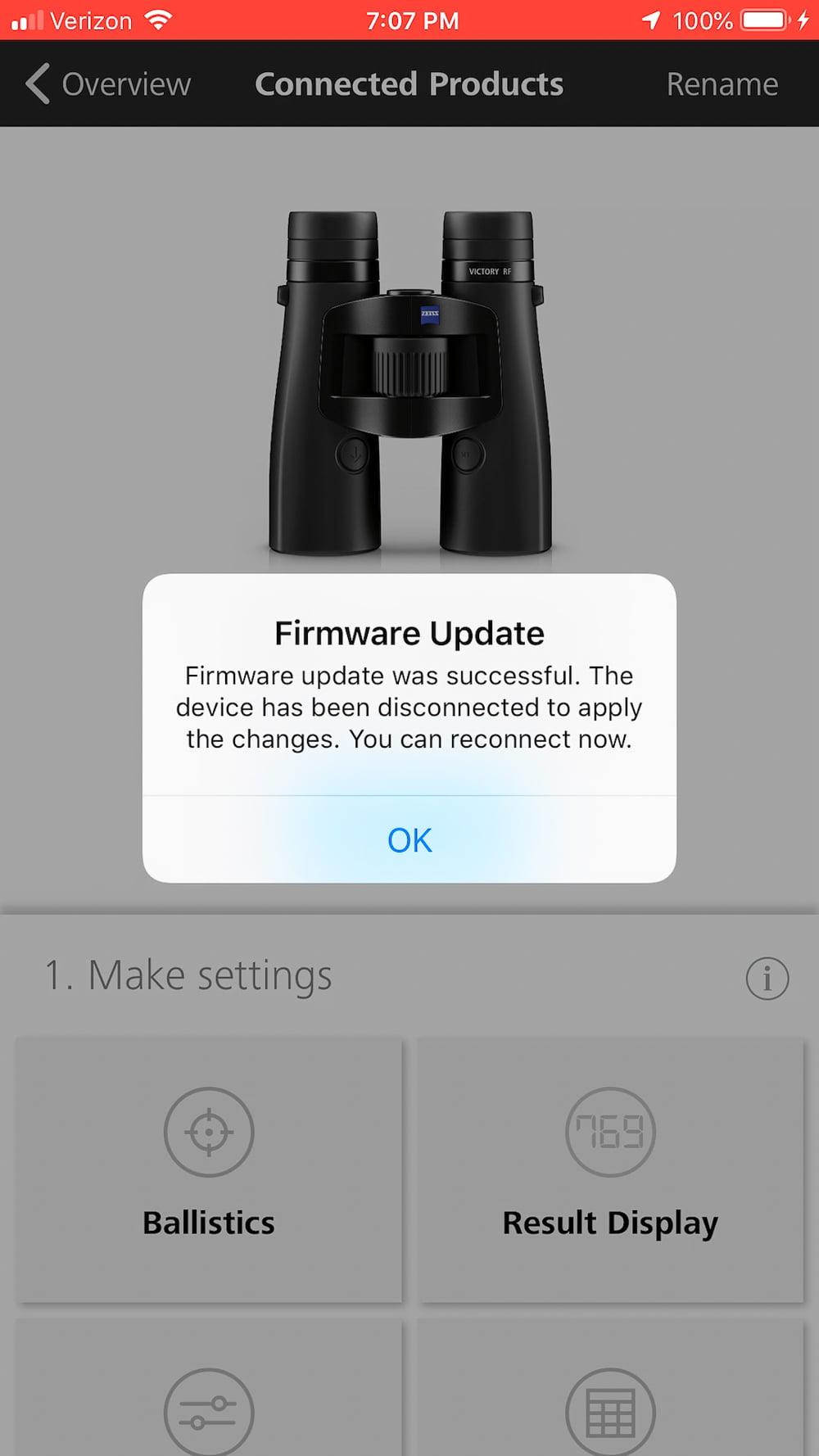
Preference Settings
I did experience issues on two occasions when ranging through driving snow and thick cloud/fog conditions. The Zeiss RF does have two ranging preference settings. The “best target” (tA b in the menu) setting gives the user the range to the strongest reading returning to the unit while the “furthest target” (tA L in the menu) gives you the furthest reading returning to the unit. After moving from the default tA b to the tA L, I only very rarely got a false reading. Since the firmware update, I haven’t experienced any false readings.
The Zeiss Hunting App has a good library of factory loads and bullets available for custom loads, but only has the ballistic coefficients listed in the G1 model. Interestingly, there is a “Calculate BC” page in the app that allows for inputting various velocities at various distances to compute a custom BC, and this will allow the hunter to use BC drag models G1, G2, G5, G6, G7, and G8. I hope the App soon sees an update where the user can easily select any BC model they want and input the BC number directly.
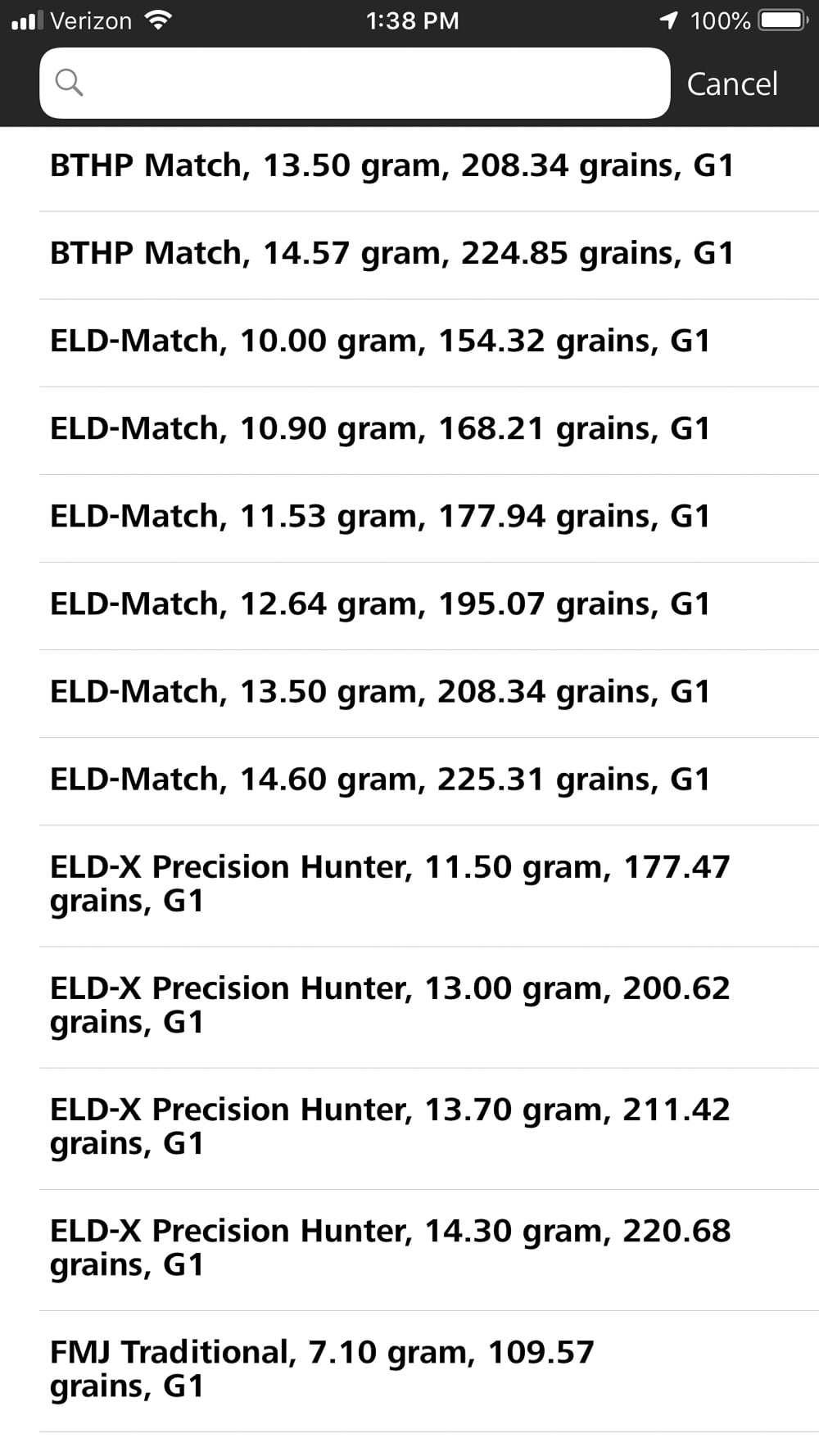
The ballistic computer included in the Zeiss Victory RF gives values exactly in line with my “Ballistic” app when using the same ballistic information and BC model. Once I had it dialed with my 212 ELD-X load out of the Seekins Precision Havak 300 Win Mag, I was getting perfect drop information out to a long of 1029 yards, where I was able to score a first round hit on a 20-inch wide rock.
Wind Calls
So what are the ballistic downsides to the RF? Well, of course, it is the wind calls. Every shooter that delves into long range learns quickly that calling the wind is the real key to success. Ballistic software is amazingly good. If you put in your time to get your values correct, you will get a good come-up value with most systems, and the Zeiss RF is no exception. However, I still found I had to go to an app, whether it was Ballistic or Zeiss Hunting to get a good windage value. In the field, I was able to keep a table with generic windage adjustments for various ranges and wind speeds taped to my stock for quick reference.

The Zeiss Victory RF 10X42 is simply amazing. Top-shelf optics, reliable ballistic computing, and excellent range finding performance, all in one slim, lightweight package backed up by excellent post-sale customer support including firmware updates. Its only downside is its cost, but even this is reasonable given that it replaces both an elite binocular and feature-filled ballistic computing rangefinder. The Zeiss RF isn’t just a great product, it is my favorite product I reviewed in 2018, and I think serious Western bowhunters and rifle hunters should put it at the top of their own research lists heading into 2019.
You can comment on this article or ask Matt questions here.














